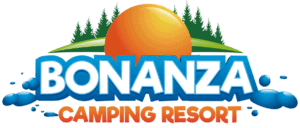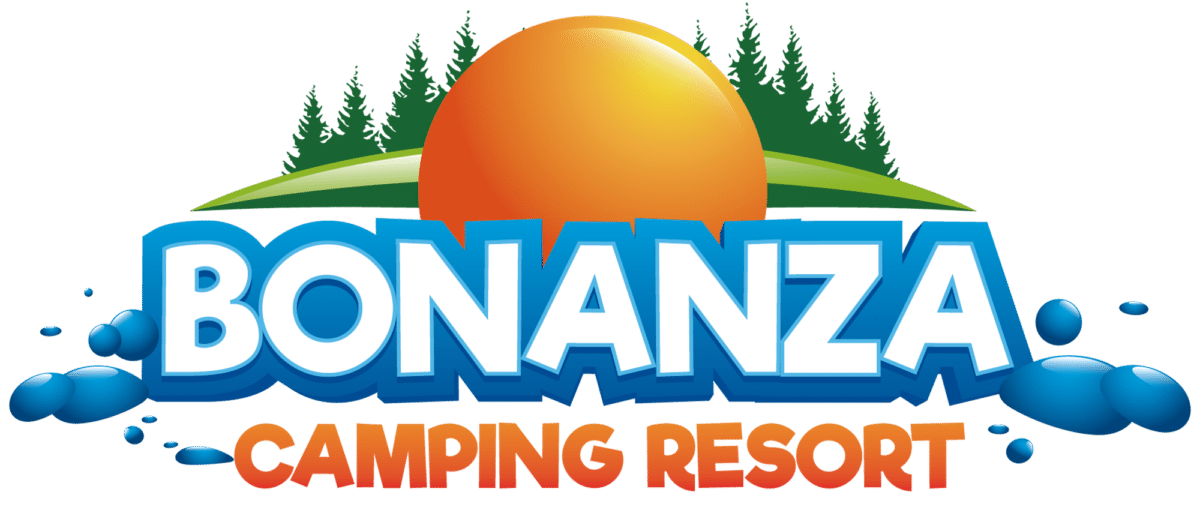Ever watched your kids hit a wet spot on the driveway and feel your stomach drop? At Apa Track—just ten minutes from your Bonanza campsite—that same slide-and-glide thrill comes wrapped in a digital safety net. Drift-control firmware, think “traction control for go-karts,” samples each wheel hundreds of times a second, trimming power before spins turn scary and still letting drivers kick the tail out just enough for an Instagram-worthy spray of sparks.
Key Takeaways
• Apa Track is only 7.6 miles (about 10 minutes) from Bonanza Camping Resort.
• Drift-control computers check each wheel every 0.005 seconds to keep karts from spinning.
• Speed modes: Junior 12 mph (48″ tall), Rookie 16 mph, Pro 21 mph (54″ tall).
• Staff can hit one button to stop all karts at once for safety.
• Races last 8 minutes; pay $22 or $18 with a Bonanza wristband; group deals start at 12 drivers.
• A tablet can swap any kart from Junior to Pro in seconds—no tools needed.
• Mixed ages ride together: software limits younger kids while teens chase faster laps.
• QR code lets tech-minded racers watch live speed, drift, and battery numbers on a phone.
• Use promo code BONANZA10 for 10 % off; shortest lines and lower prices run 2 – 4 p.m.
• Track logs count fewer than 2 spins per 1,000 laps this season—safe and fun..
Hook lines:
• Parents: “Yes, your 8- and 13-year-old can race side-by-side—Junior mode caps speed and drift angle so collisions stay off the highlight reel.”
• Thrill-seekers: “Pro mode still lets you hang the rear end out at a silky 10°—lap leaderboard or it didn’t happen.”
• STEM teens: “Want the sensor specs? Grab the QR code in the pit and watch live telemetry on your phone.”
• Group planners: “One tablet tap toggles Rookie to Pro, so the scout troop and the sales team both finish on schedule—no wrenching required.”
Buckle up—next we’ll peel back the firmware layers, show you how staff monitor every kart in real time, and share a few campground-to-track hacks that make your rain-day detour the talk of tonight’s campfire.
Distance & Need-to-Know at a Glance
• 7.6 miles—about a 10-minute cruise along Dells Parkway from Bonanza Camping Resort to Apa Track.
• Minimum height: 48 inches for Junior, 54 inches for Sport and Pro.
• Speed tiers: Junior 12 mph, Rookie 16 mph, Pro 21 mph.
• Sessions: 8-minute heats with a 5-minute turnover; $22 per driver, $18 with your campsite wristband; group discounts kick in at 12 seats.
Those numbers feel as compact as the karts themselves, yet every line hides a software setting. Top speeds, drift angles, even the smoothness of throttle tip-in live inside the code. Swipe a staff tablet and Junior instantly becomes Pro—no socket wrenches, no carb jets, just a new profile uploaded before your helmet visor clicks shut.
The short drive also means you can test the route the night before your booking to avoid construction snarls. Plan a grocery stop at the gas station halfway and you’ll combine errands with reconnaissance. By the time race day arrives, everyone in the car will know the landmarks that signal excitement is only minutes away.
How Drift-Control Firmware Turns Slides Into Smiles
Imagine a referee living between your right foot and the rear axle. The moment you mash the accelerator, the firmware compares wheel speed, steering input, and lateral G-force. If the rear wheels outrun the fronts by more than a programmer-defined sliver, torque gets trimmed and a whisper of regenerative braking nudges the kart back in line.
That all happens every five milliseconds—about the time it takes a hummingbird to flap once. Because correction is so fast, even first-timers glide through polished concrete corners at a showy 5–10° of yaw without looping or spearing the barrier. Drivers feel like pros; parents feel their heart rate drop by half.
Live Safety Checks Parents Can See
Just beyond pit lane, a 30-inch monitor mirrors the control tablet. Battery temperature, motor amperage, and each kart’s active profile glow in traffic-light colors. During the pre-race briefing, marshals purposely hit the remote all-stop button—every kart ghosts to a halt in unison, proving the system works before junior ever presses the throttle.
Apa Track tracks its own incident data, and spins sit below 2 percent per 1,000 laps this season. That isn’t a marketing boast; it’s a firmware log the operations manager downloads nightly and shares with insurance auditors. The calm numbers underpin the whoops you’ll hear bouncing off the walls.
Big-Kid Energy Without Big Risk
Mixed-age families normally struggle to find a single activity where older siblings aren’t bored and younger ones aren’t terrified. Drift-control firmware solves that standoff in software. Junior mode soft-launches like Mom’s hybrid SUV, limits drift to 6°, and caps speed at 12 mph. Sport mode lets teens chase a 10° slide and 18 mph punch out of hairpins—same track, same heat, zero drama.
Budget worries? Book the afternoon Family Bundle: four heats, free spectator wristbands, and a smartwatch-readable lap summary. Flash your Bonanza campsite code at check-in and the total drops another 10 percent, leaving room for post-race ice-cream cones back at the fire ring. A low-cost thrill in the afternoon means you can still splurge on extra s’mores ingredients when the sun goes down.
Sensor Secrets for the Teen Tech Squad
Under the fiberglass shell lives a six-axis IMU, dual wheel-speed encoders, and a steering-angle potentiometer. Data flows into a CAN bus at 500 kB/s, then the firmware’s stability loop crunches vector math your algebra teacher would applaud. Teens scan a QR sticker on the dash to stream that data in real time—watch lateral Gs spike, drift angle plateau, and regen current feed charge back into the battery.
Curious minds can export the raw CSV afterward and pull it into any spreadsheet. Comparing lap four to lap five reveals how a single missed apex costs precious tenths of a second. The numbers turn fun into a STEM assignment without any nagging from parents or counselors.
From Scout Troops to Sales Teams—Easy Group Logistics
Group leaders juggle waivers, watches, and weather. Apa Track delivers 60 riders an hour: ten karts, eight-minute heats, five-minute swaps. Load the Junior profile for a youth group, tap Pro for the managers chasing leaderboard glory—nobody exchanges helmets or waits for gear ratios to change.
A downloadable booking checklist highlights everything: deposit deadlines, height rules, and optional trophy packages. Add the private-room upgrade and staff wheel in pizza the moment the last heat ends, so you can start awards while adrenaline is still buzzing. Clear post-race showers in the locker area help everyone freshen up before heading back to camp or the conference center.
How Apa Track Stacks Up Against Other Dells Racetracks
Wisconsin Dells spoils thrill-seekers with choice. Yeti Yard article spotlights a course that triggers Mario-Kart-style power-ups on an elevated layout. Wilderness kart info details a two-story track with 525 feet of twists. Knuckleheads overview praises tight, slick turns but notes higher height limits that sideline younger racers. Apa Track’s edge is its firmware toolbox—customizable speed tiers, remote all-stop, real-time telemetry—and Bonanza camper discounts that seal the deal for mixed-age groups.
Competing venues certainly deliver thrills, yet none offer a live tablet dashboard where parents watch drift angles in real time. The extra data transparency builds trust, which is why scout leaders and HR managers alike gravitate to Apa when safety sign-off matters as much as speed.
Road-Tested Tips for Bonanza Campers
Slide before supper: families score shorter lines and lower prices between 2 p.m. and 4 p.m., then shuttle back in time to grill under the pines. Date-night crowd? League Mode flips on after 7 p.m., raising the speed ceiling and dimming the house lights for neon halos in your Reels. Either way, the drive back to Bonanza takes less than ten minutes, so tired kids don’t have time to doze off.
Pack smart. Leave phones, keys, and loose change at the campsite; a firmware-triggered all-stop can pop unsecured items free quicker than you can say “where’s my screen protector?” Slip a lightweight balaclava in your daypack—no helmet funk, and the fabric doubles as a pillowcase in the tent.
Firmware-Savvy Driving Hacks for Every Lap
Smooth steering, steady throttle, eyes up: that triangle remains gospel because even millisecond AI can’t fight physics if you crank the wheel mid-slide. Listen for the single beep when the controller trims power; treat it like a digital coach saying “easy.” Tag the apex sensor pad cleanly on lap three and the system rewards consistency with a tiny power bump—proof that precision pays.
Swap the squeal of polished concrete for the crackle of pine logs and keep the adrenaline rolling all weekend long. Basecamp at Bonanza Camping Resort and you’re only ten easy minutes from Apa Track—yet a world away once the campfire sparks fly. Secure your site or cabin today, pack the helmets with the marshmallows, and let your crew chase lap records by day and fireflies by night. Click “Reserve” now; your memory-making north-woods pit stop is waiting at Bonanza.
Frequently Asked Questions
Q: Is the drift-control firmware actually proven to reduce spins and crashes?
A: Yes—Apa Track logs every lap and shows less than a 2 percent spin rate per 1,000 laps this season; that data is pulled directly from the firmware and reviewed nightly, so the system’s effectiveness is tracked and verified in real time.
Q: Can my 8-year-old and 13-year-old race together without drama?
A: Absolutely; staff load Junior mode on the younger child’s kart and Sport or Pro on the older sibling’s, so both drive the same track in the same heat while speed, drift angle, and throttle response stay age-appropriate and collision-risk low.
Q: Do marshals watch the karts live while we’re on track?
A: A control tablet shows every kart’s speed, battery temp, and active profile in traffic-light colors, and the staff can hit a remote “all-stop” that brings every vehicle to a gentle halt within seconds if they spot unsafe behavior.
Q: What happens in a true emergency—like a helmet coming loose?
A: The track’s firmware-linked all-stop button instantly cuts motor power and adds regenerative braking to all karts, so they coast to a quick, steady halt while marshals step onto the course to resolve the issue before racing resumes.
Q: How sideways can I get in Pro mode; is the fun still there?
A: Pro mode allows up to roughly a 10-degree controlled slide, which feels like a stylish drift without losing control, so you can kick the tail out for photos and still post competitive lap times on the leaderboard.
Q: Are there leaderboards or timed heats for bragging rights?
A: Every session is electronically timed, and the top-three lap times of the day scroll on a big screen in the pit; you’ll also get a printout or email showing lap-by-lap splits and max drift angle so you can flex online.
Q: What sensors feed the drift-control system?
A: Each kart carries a six-axis inertial measurement unit, wheel-speed encoders on all four hubs, and a steering-angle sensor; those data streams hit the firmware every 5 milliseconds to decide whether to add torque, trim power, or nudge regen braking.
Q: Can I view my own telemetry after the race?
A: Yes—scan the QR code on your steering column after the checkered flag and your phone will open a dashboard with lap times, lateral Gs, drift angle traces, and even watt-hours recovered through regenerative braking.
Q: Is there a behind-the-scenes tech tour for STEM groups?
A: If you book in advance, staff can add a 15-minute pit walk where students see the diagnostic cradle, battery bay, and firmware update station, all at no extra charge for groups of 12 or more.
Q: Can the firmware cap speed for younger campers in a big group?
A: Yes—profiles like Junior (12 mph) and Rookie (16 mph) can be assigned kart-by-kart from the control tablet, so mixed-age groups stay safe without splitting into separate heats.
Q: How many riders can you move through per hour for corporate or scout events?
A: Ten karts run every eight-minute heat with a five-minute turnover, so you can cycle about 60 drivers an hour, keeping large groups on schedule even when you add a podium photo session.
Q: Do you offer group discounts and food packages?
A: Group pricing starts at 12 seats with per-driver discounts, and you can bundle a private party room, pizza delivery, and custom trophies that roll in the moment the last heat ends.
Q: Is advance booking required or can we just show up from Bonanza?
A: Walk-ins are welcome when slots are open, but weekend and evening heats often sell out, so reserving online with promo code BONANZA10 guarantees your preferred time and discount.
Q: Can spectators watch without paying?
A: Yes—non-drivers enter free, hang out on the elevated viewing deck, and even see the live telemetry screen so they can cheer when your kart posts a personal best.
Q: Do I need closed-toe shoes and other gear?
A: Closed-toe athletic shoes are mandatory; helmets are provided and sanitized between uses, but many campers bring a lightweight balaclava for extra comfort under the lid.
Q: Is the track climate-controlled for rainy or hot days?
A: The entire facility is indoors with HVAC that keeps temps in the 70s year-round, so you can race in comfort whether it’s pouring rain or blazing sun back at the campsite.
Q: How long and how much is a typical session?
A: A standard booking gets you an eight-minute heat for $22, or $18 with your Bonanza wristband; that usually translates to 8–10 laps depending on speed tier and traffic.
Q: Can my six-year-old ride as a passenger?
A: Not yet—minimum height is 48 inches to reach the pedals safely, which most kids hit around age seven or eight, and there are no two-seat karts at this time.
Q: Can drivers change modes mid-race to chase a faster lap?
A: Only marshals can switch profiles, and they lock in your chosen mode at the grid so everyone finishes the heat on an even, pre-approved setting.



